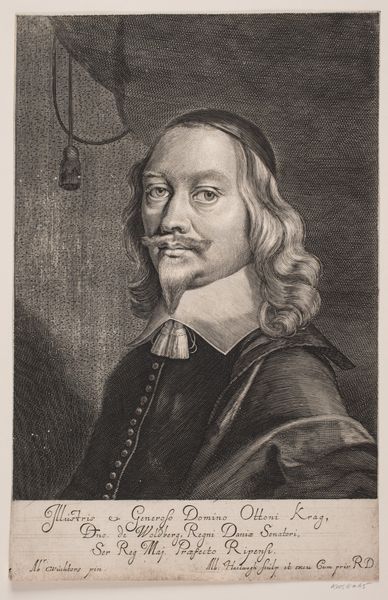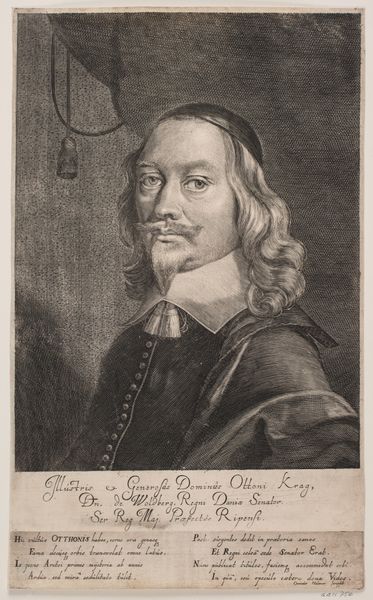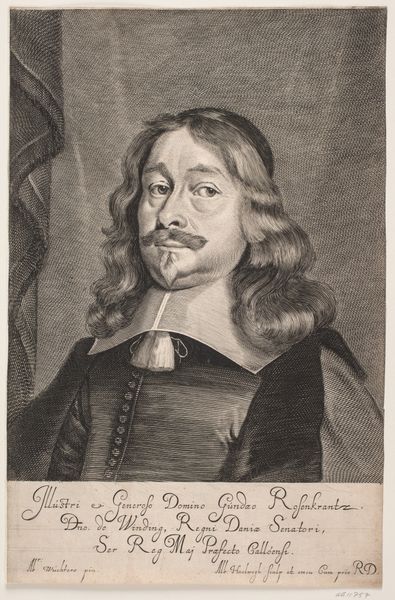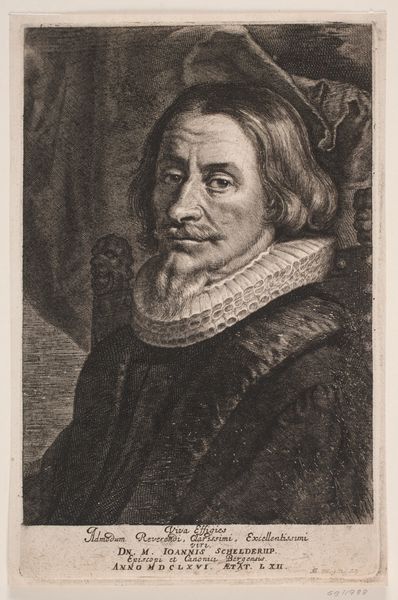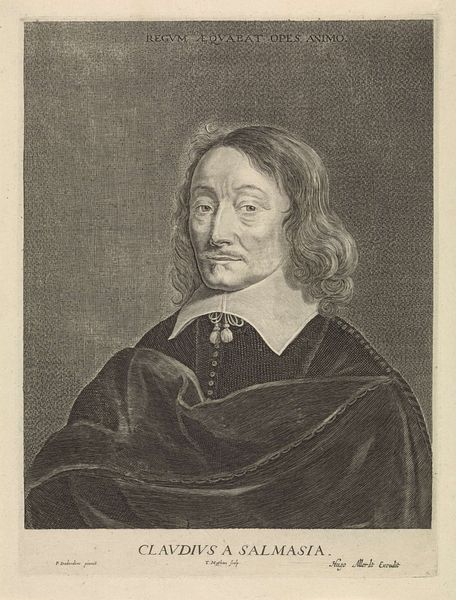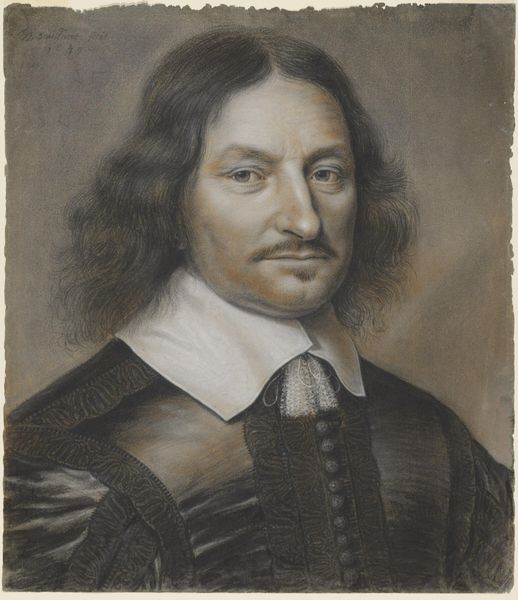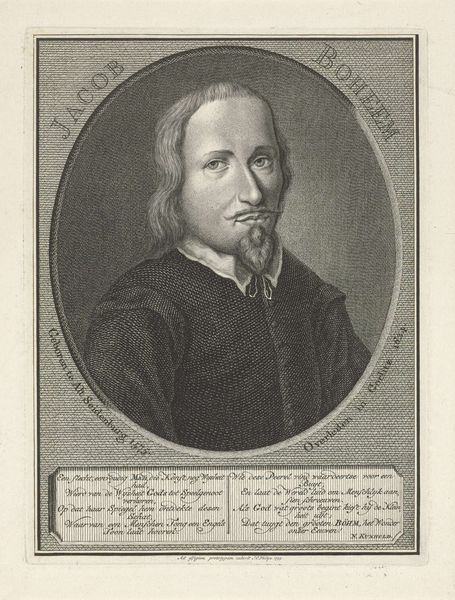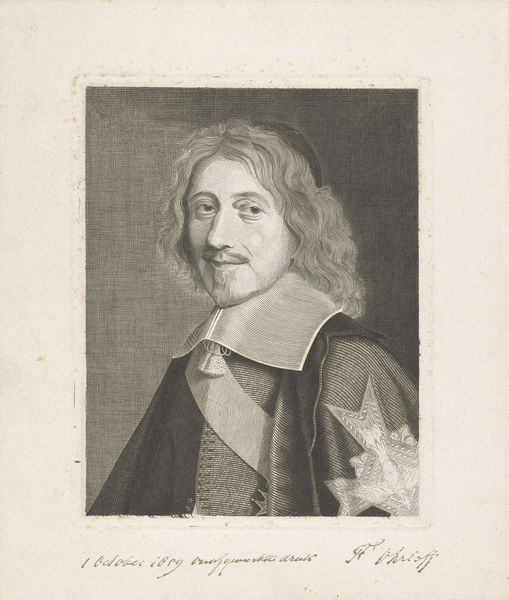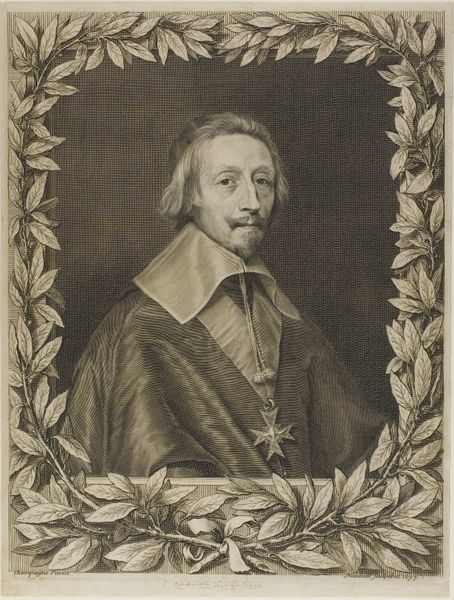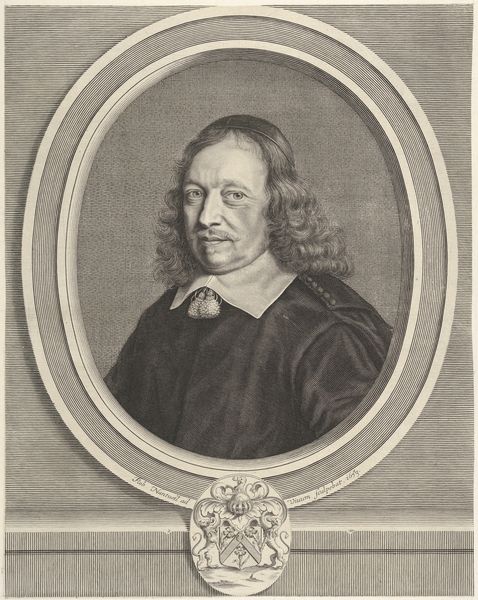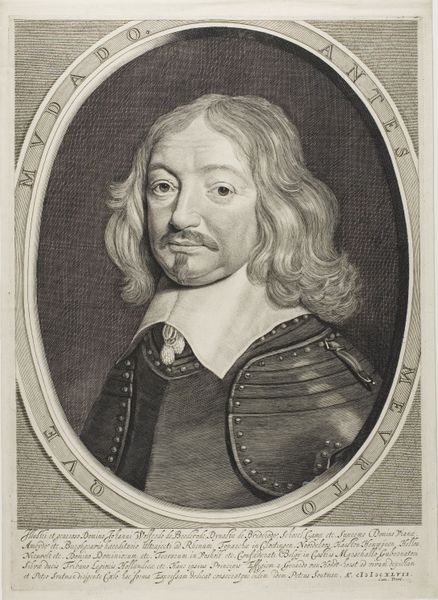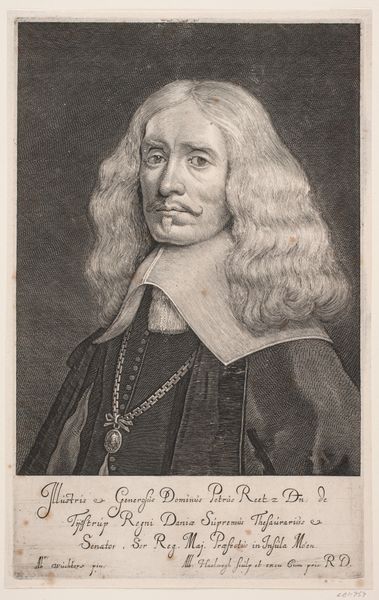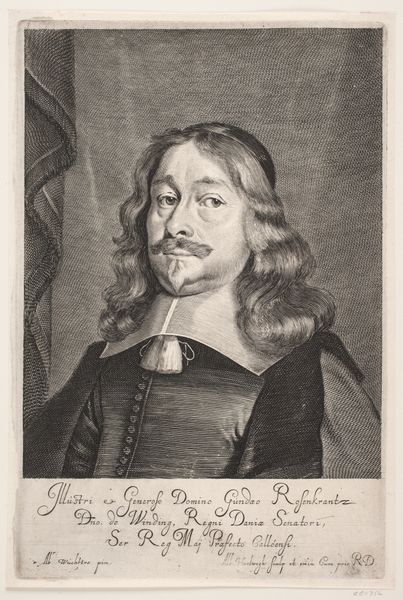
print, engraving
#
portrait
#
baroque
# print
#
portrait reference
#
pencil drawing
#
portrait drawing
#
engraving
#
portrait art
Dimensions: 321 mm (height) x 206 mm (width) (bladmaal)
Curator: Here we have a fascinating engraving titled "Otto Krag" by Albert Haelwegh, created sometime between 1655 and 1659. It's currently housed here at the SMK, the Statens Museum for Kunst. Editor: My first thought? That lightbulb dangling in the corner looks anachronistic! But no, it's likely an oil lamp… that initial jolt throws my perception beautifully off kilter, and adds a humorous tone against Krag's somber face. Curator: The print medium is critical here. Engraving, especially in the Baroque period, was a vital form of visual communication. Think about the dissemination of images and power; prints like these made elites like Otto Krag visible to a much broader audience. Editor: And look at the texture achieved with lines and dots! There's a kind of dedicated labor in engraving that other art forms simply can’t replicate, the craftsman’s dedication, translating into such careful lines – it reminds me how slowly information once traveled. Curator: Precisely. And consider the context— the means of producing portraits like this often involved workshops, a division of labor. Haelwegh would have had apprentices, perhaps even other masters contributing to the final product. So, how many hands, eyes, or agendas guided that burin? Editor: All that effort seems to enhance Otto’s presence… look at the knowing gaze, and impressive ‘tache… like he understands something we just never could! And it all feels captured using such intricate lines. You know, these Baroque fellows really knew how to wear a wig. Curator: That's precisely the point—the materials, the skilled labour involved, all intended to construct a powerful image, designed for social and political impact in its time. We could discuss the political position held by Krag himself as a crucial contextual backdrop here… Editor: It gives new meaning to “handmade”. Examining all the processes involved deepens our sense of Otto Krag as not just a man but an idea crafted painstakingly across material planes, his likeness pushed out into the world...it almost makes me feel sorry for him! Curator: Yes, this analysis certainly makes me want to spend longer considering not just the 'who' but also the 'how' and 'why' behind these works. Editor: Me too. All this labor transforms how I appreciate him, this ‘Otto Krag,’ I'm not sure how I felt before...now, he seems forever impressed on my imagination, made newly visible!
Comments
No comments
Be the first to comment and join the conversation on the ultimate creative platform.
